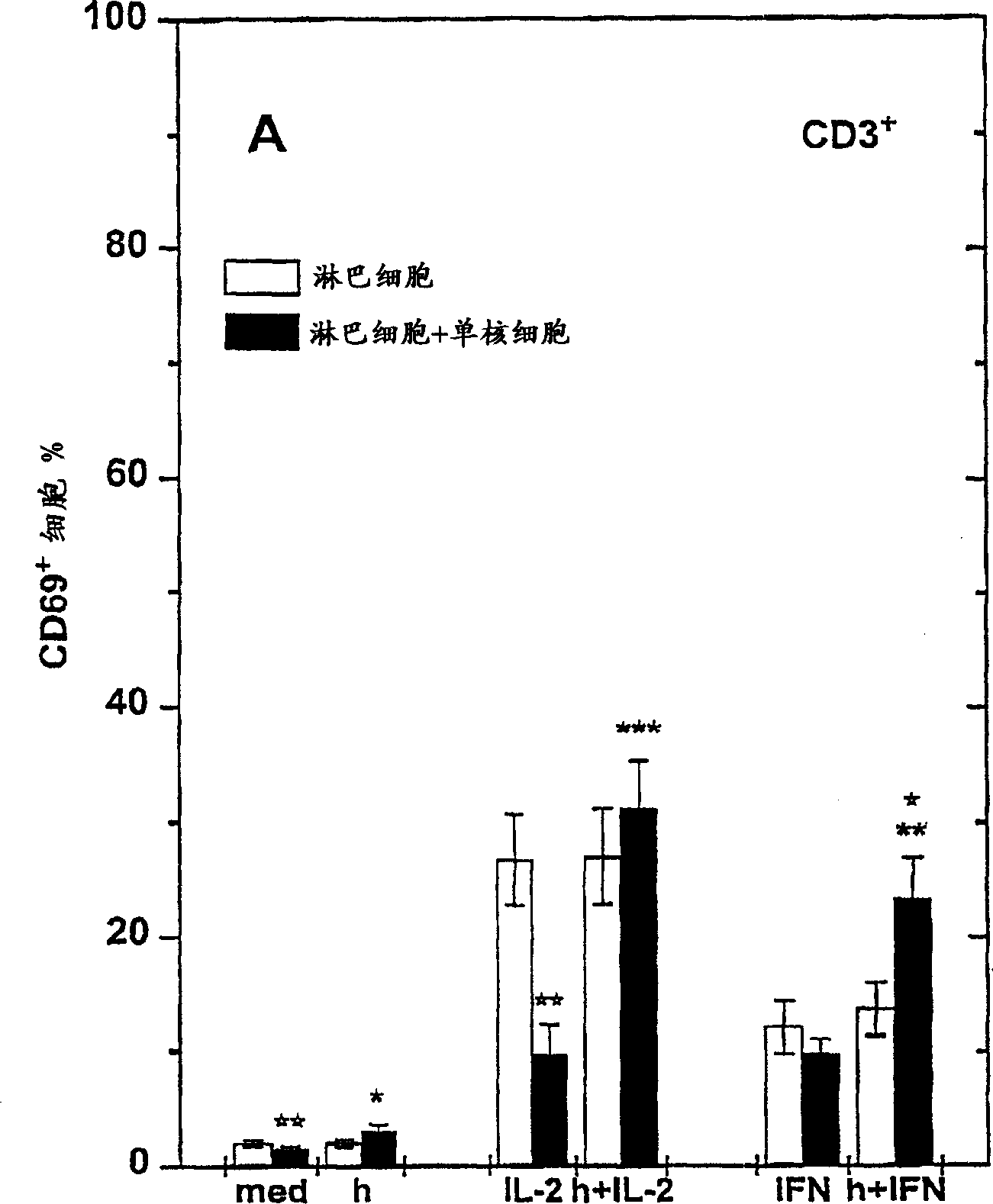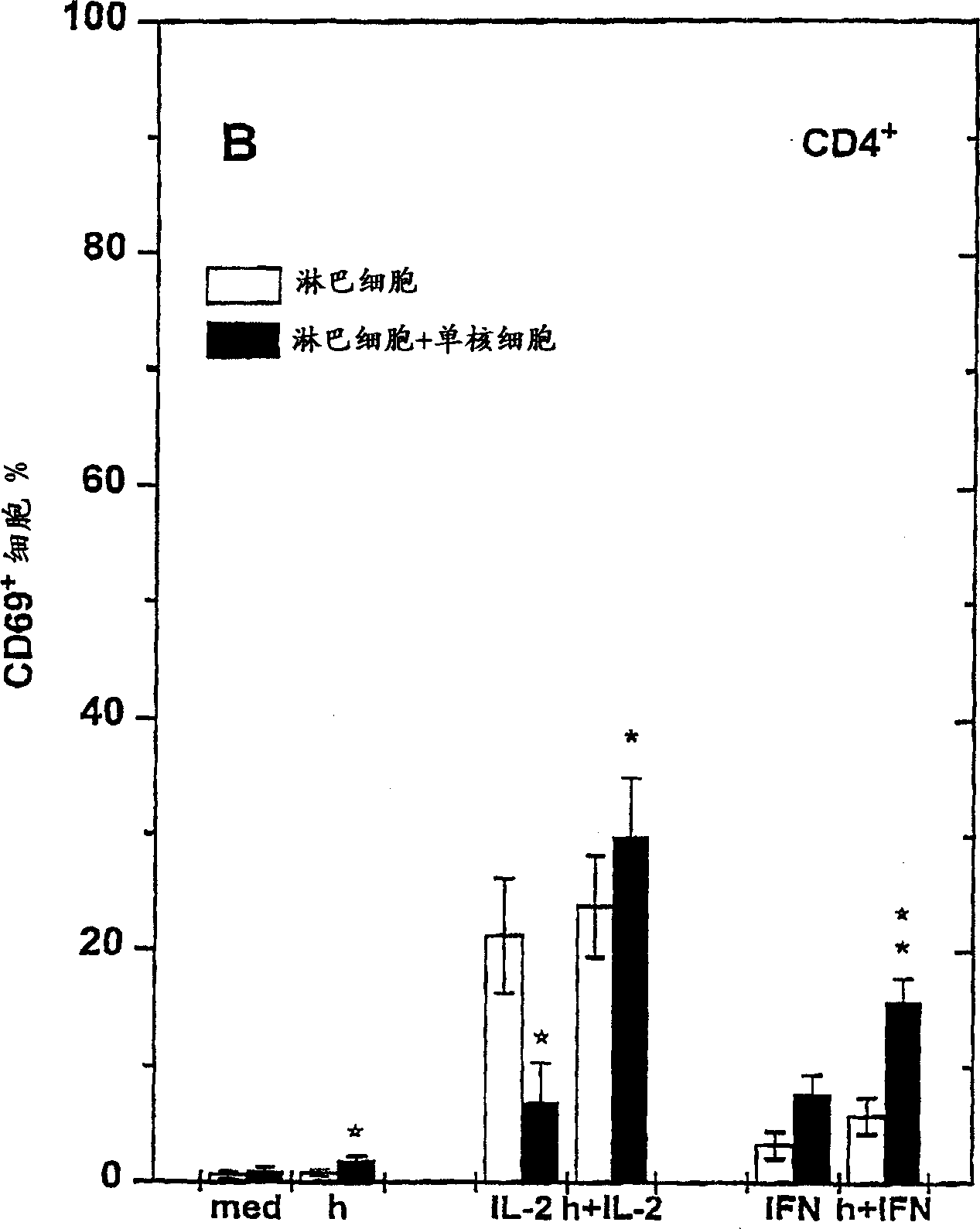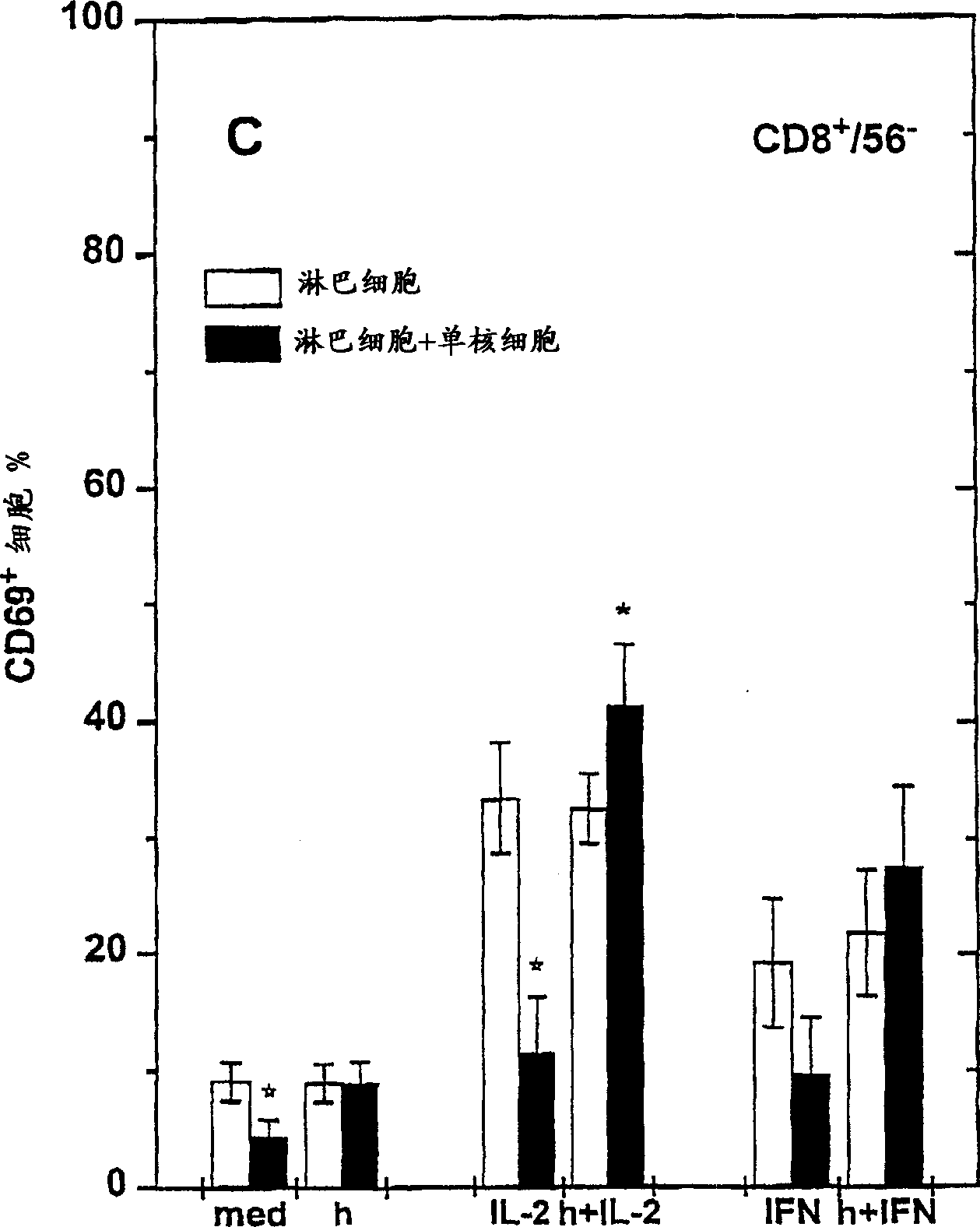Activation and protection of T-cells (CD4+ and CD8+) using and H2 receptor agonist and other T-cell activating agents
A cellular, cytostatic technology used in the field of treatment of cancer or viral diseases that can address issues such as reduced therapeutic viability of the immune system
- Summary
- Abstract
- Description
- Claims
- Application Information
AI Technical Summary
Problems solved by technology
Method used
Image
Examples
Embodiment 1
[0102] Isolated peripheral blood lymphocytes were cultured at 37° C. for 16 hours in microplates with or without their own MO (150,000 cells / well / total volume 0.2 ml). Simultaneously with T cell activation compounds such as IFN-α (100U / ml) or IL-2 (100U / ml), H 2 Cells were treated with receptor agonists such as histamine (50 [mu]M) or media controls. After the culture was completed, the cells were rinsed twice and incubated with labeled monoclonal antibodies, which were antibodies against T cell surface markers CD3ε, CD4, CD8 and CD69 or NK cell marker CD56 (purchased from Becton Dickinson, stockholm, Sweden). Expression of the different antigens (according to forward scatter and side scatter light) was estimated by lymphocyte gating and compared to the pure lymphocyte fraction (comprising + / 4 + , CD3e + / 8 + and CD3E + / 8 + / 56 + .
[0103] unstimulated CD3ε + CD69 expression on the surface of T cells was very low (~2%). In the absence of MO, after treatment with IL...
Embodiment 2
[0109] In this example, elutriated lymphocytes were incubated with MO as described in Example 1 for 16 hours at 37°C. Add catalase at 10-200U / ml. That is, hydrogen peroxide scavenger. IL-2 was added at 100 U / ml. Monitoring CD3ε by flow cytometry + CD69 expression of T cells. Data represent CD3ε + Mean expression of CD69 in lymphocytes±s.e.m.
[0110] It was found that catalase significantly reversed the inhibitory effect of MO on cytokine-induced CD69 expression (Figure 4), but did not affect the induction of CD69 expression in each cell in the absence of MO. Use catalase alone at concentrations ranging from 0 to 200 U / ml for CD3ε expressing the CD69 marker + Cell percentage has little effect. However, catalase had a greater effect on CD69 expression in the presence of IL-2. More specifically, the data show that with IL-2 treatment alone in the absence of catalase, only a little more than 4% of processed CD3ε + Cells exhibit CD69 labeling. However, as the catalase co...
Embodiment 3
[0113] In order to explore the H 2 Effect of receptor agonists on MO-induced inhibition of T cell activation based on CD69 expression, CD3ε incubated with MO at 37°C + T cells for 16 hours, and with IFN-α (100U / ml), IL-2 (100U / ml), culture medium, H 2 Agonists (histamine) and / or H 2 Receptor antagonist (ranitidine) treatment.
[0114] The effect of histamine on cytokine-induced CD69 expression is dose-dependent, the final concentration of histamine is 0.1-50μM, ED 50 about 2 μM. ranitidine i.e. H 2 A type of histamine receptor antagonist that completely antagonizes the effects of histamine at equimolar or 10-fold lower concentrations. Similar concentrations of AH20399AA did not block the histamine effect. AH20399AA is a chemical reference substance of ranitidine whose thioester group is replaced by an ester group, so it is the same as H 2 Receptor affinity is reduced >50-fold (Hellstrand, K., et al., J. leukoc. Biol. 55:392 (1994)).
[0115] The results of this example ...
PUM
 Login to View More
Login to View More Abstract
Description
Claims
Application Information
 Login to View More
Login to View More - R&D
- Intellectual Property
- Life Sciences
- Materials
- Tech Scout
- Unparalleled Data Quality
- Higher Quality Content
- 60% Fewer Hallucinations
Browse by: Latest US Patents, China's latest patents, Technical Efficacy Thesaurus, Application Domain, Technology Topic, Popular Technical Reports.
© 2025 PatSnap. All rights reserved.Legal|Privacy policy|Modern Slavery Act Transparency Statement|Sitemap|About US| Contact US: help@patsnap.com



